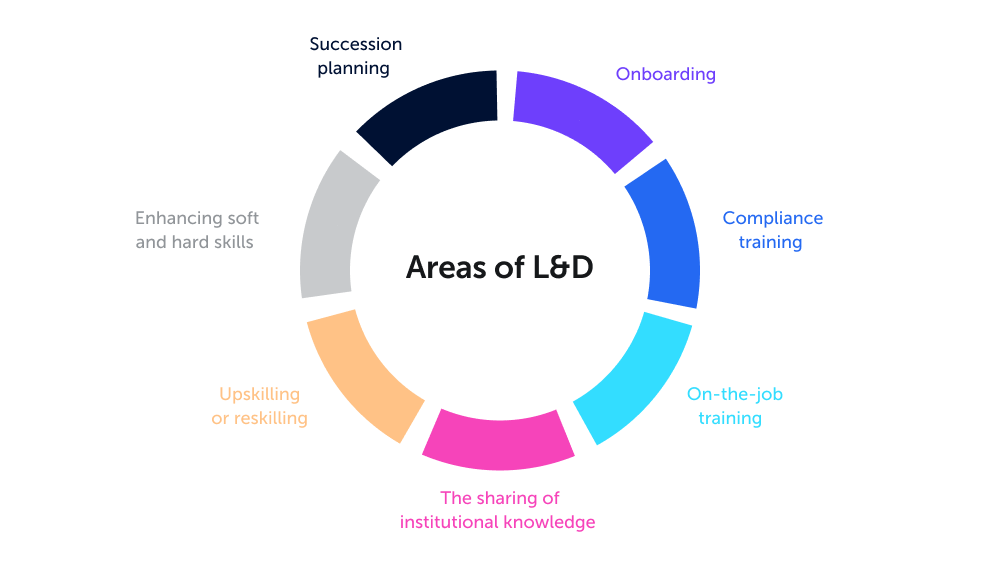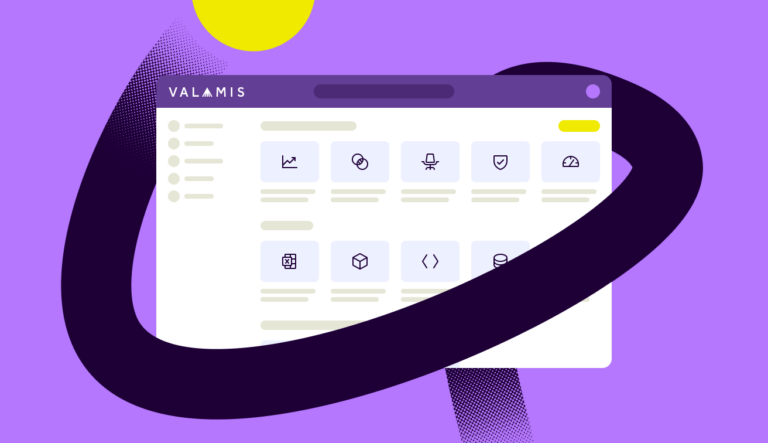What is organizational development?
Learn how organizational development helps your business grow with purpose. This blog breaks down what OD really is, why it matters, and how to put it into practice.

Organizations are constantly under pressure to adapt, whether due to emerging technologies, shifting workforce expectations, or broader market changes.
But how do you create meaningful, long-lasting change that actually sticks?
This is where organizational development comes in.
Rooted in behavioral science and focused on continuous improvement, organizational development (OD) is a structured approach to building a more effective workplace.
It’s not just about tweaking processes or introducing a new training program but about aligning strategy, people, and culture so your organization can evolve with purpose.
Whether you’re looking to boost performance, navigate change, or future-proof your teams, understanding organizational development is a powerful first step.
Let’s explore what it really means, why it matters, and how to put it into practice.
What is organizational development?
Organizational development is a long-term, evidence-based approach to improving how a company functions, from leadership and communication to workflows and culture.
Rather than focusing on individual issues in isolation, OD looks at the organization as a whole system. It identifies areas of friction or misalignment and introduces strategic interventions to drive positive, sustainable change.
Think of it as a continuous cycle of learning, adapting, and evolving, grounded in data, guided by values, and driven by people.
OD can take many forms, including:
- Restructuring teams to improve collaboration
- Coaching leaders to support culture change
- Implementing feedback loops that increase transparency
- Launching cross-functional innovation labs
What makes it different from other change efforts is the emphasis on participation. Employees are often co-creators of the change, which makes adoption more natural and lasting.
In short, organizational development helps organizations become more adaptive, resilient, and aligned – not just once, but continuously.
How organizational development and L&D work together
Organizational development focuses on the big-picture shifts that help a business adapt, grow, and perform better, but it’s learning and development (L&D) that equips people to make those shifts happen.

Whether you’re building leadership capacity, preparing for a digital transformation, or shifting culture, OD often uncovers skills gaps that L&D is uniquely positioned to close. In this way, learning becomes a core driver of change.
Strategic learning initiatives can also help reduce resistance, increase buy-in, and ensure that new processes or behaviors are understood, adopted, and sustained over time. It’s how organizations turn vision into action.
To make this connection work, you need the right infrastructure, one that allows you to deliver learning that’s targeted, scalable, and aligned with your broader development goals.
An Learning Management System (LMS) makes it easier to embed L&D into your OD strategy, so your team have the tools they need to learn, grow, and lead your organization forward.
What is the purpose of organizational development?
The goal of organizational development is simple in theory: to make your business more effective, not just in one department or during a single project, but system-wide and long term.
It’s about building a healthier organization from the inside out.
That means aligning people, processes, and culture so your organization can adapt quickly, perform at a high level, and stay competitive.
That said, the path to improvement doesn’t look the same for everyone.
Some organizations adopt OD to strengthen their leadership bench. Others are navigating disruption, a merger, restructuring, or digital transformation.
And many are focused on building a more connected, efficient, and empowered workforce.
Whatever the starting point, OD strategies typically support one or more of the following outcomes:
Adaptability
Change is constant, and OD helps organizations become better equipped to navigate it.
Whether it’s shifting market demands, technological disruption, or evolving customer needs, OD builds internal agility.
McKinsey’s Global Survey on Agile Transformation found that organizations undergoing successful agile transformations typically report 30% gains in efficiency, customer satisfaction, employee engagement, and operational performance.
Improved performance
OD initiatives often focus on the hidden blockers that hold teams back, whether that’s inefficient processes, unclear roles, or outdated systems.
By identifying and addressing these issues, OD helps create smoother workflows, more aligned goals, and stronger individual accountability.
It also plays a critical role in closing skill gaps. As roles evolve and technology advances, many employees are being asked to do more, often without the training or support to succeed. In fact, an estimated 20% of the UK workforce will be significantly underskilled for their jobs by 2030.
Organizational development tackles this challenge head-on by investing in learning, upskilling, and capability building. The result is a workforce that’s equipped to grow with the business.

How to conduct a skills gap analysis and what to do next
Start building your foundation for strategic workforce development.
Download guideStronger collaboration
Information bottlenecks, misaligned expectations, and siloed departments cost time and trust. According to Zendesk’s 2024 Employee Experience Trends Report, 63% of IT and HR leaders say communication barriers are a significant challenge in workforce management.
OD works to improve how people communicate, share feedback, and solve problems together – strengthening collaboration across the board.
A culture that supports growth
From morale and motivation to psychological safety, culture plays a huge role in how people show up at work, and whether they stay, grow, or leave.
Organizational development helps shape this culture by aligning values, behaviors, and expectations across the business.
One key element is organizational integrity – making sure that what a company says it values is actually reflected in how it operates day to day. This principle was highlighted in the MacLeod Review on employee engagement, which identified integrity as one of four key enablers of engagement.
When employees see a gap between stated values and real behavior, trust breaks down. But when “what we say” aligns with “what we do,” it builds credibility, accountability, and a stronger sense of purpose.
More effective leadership
Effective leaders are a multiplier: they set direction, inspire action, and help others succeed.
OD develops leadership at every level of the organization through coaching, feedback, and structured development pathways.
The result? A deeper bench of confident, capable leaders ready for what’s next.
Greater employee engagement and retention
Engaged employees contribute, collaborate, and care about the outcomes. Organizational development supports engagement by creating systems and opportunities for people to feel heard, valued, and invested in the organization’s success.
One key driver is employee voice – the idea that employees should have meaningful input into decisions that affect their work and the direction of the organization.
The 2009 MacLeod Review identified employee voice as one of the four essential enablers of engagement, highlighting its role in building trust, boosting morale, and encouraging ownership.
OD programs often include feedback loops, collaborative planning, and participatory leadership models that elevate employee voice from a buzzword to a lived experience.
Combined with clear development paths, recognition programs, and regular feedback, these strategies help create a workplace where people thrive.
Learn how Valamis can support your employee engagement initiatives.
Better decision-making
Organizational development helps leaders and teams make smarter, more informed decisions by emphasizing data, systems thinking, and feedback.
Instead of relying on assumptions or tradition, OD encourages evidence-based practices that are aligned with real business needs and outcomes.
This not only leads to better choices but also builds trust.
A recent study found that leaders who explicitly take an evidence-based approach to decision-making are more trusted by employees.
When people see that decisions are grounded in facts, it creates transparency and boosts confidence in leadership.
OD also improves how information flows through the organization, breaking down silos and ensuring decision-makers have timely, relevant insights.
Whether it’s shaping strategy or solving everyday challenges, better decisions lead to better results, and a more empowered, aligned workforce.
Increased innovation
Innovation is a key driver of sustainable growth, differentiation, and long-term success.
84% of executives say innovation is extremely or very important to their organization’s success and growth. But despite this recognition, many businesses struggle to create the right conditions for innovation to take root.
OD helps cultivate a culture where new ideas are encouraged, experimentation is safe, and learning from failure is seen as a path to progress.
Through intentional changes in leadership style, communication, and team dynamics, OD makes it easier for employees to contribute creatively and challenge the status quo.
It also ensures that innovation isn’t limited to a specific department or product cycle. Instead, innovation becomes embedded in how people think, collaborate, and solve problems across the organization, from frontline teams to executive leadership.
The process (step by step)
Organizational development is an ongoing process designed to help your organization adapt, grow, and thrive.
While each OD effort is unique, most follow a common framework that includes several key stages:
Identify the need for change
The process begins with recognizing that something in the organization needs to improve.
This could stem from external pressures, such as market shifts or new regulations, or internal challenges, such as declining engagement, performance bottlenecks, or cultural misalignment.
Leaders, HR teams, or employees may flag concerns, but the key is to define the problem clearly and build a shared understanding of why change is necessary.
Diagnose what’s really happening
Once a need is identified, the next step is discovery.
This involves gathering data through surveys, interviews, observations, or performance metrics to understand the root causes of the issue, not just the symptoms.
Think of this as an organizational health check. The goal is to pinpoint where gaps exist in areas like communication, structure, leadership, or culture.
Design the right intervention
With insights in hand, it’s time to co-create solutions.
OD interventions can vary widely, from team coaching and leadership development to restructuring workflows or updating values and behaviors.
At this stage, it’s important to tailor interventions to your organization’s context, priorities, and readiness for change. Quick fixes rarely work; sustainable change needs thoughtful planning.
Implement the intervention
Now it’s time to put the plan into action.
This might involve piloting new processes, launching training programs, reshaping teams, or rolling out new tools.
Clear communication and leadership buy-in are critical here. Change can cause uncertainty, so make sure people understand the purpose, the plan, and their role in it.
Evaluate and adjust
Change isn’t successful until it delivers results.
OD includes ongoing evaluation to track progress and measure impact, such as performance metrics, engagement scores, or qualitative feedback.
If something isn’t working as expected, the strategy can be refined. OD is inherently iterative, not linear.
OD is as much about how you change as what you change. A well-managed process helps build trust, reduce resistance, and ensure that improvements stick, so you’re not just reacting to problems but proactively building a stronger organization.
Looking to support this process with the right tools and learning infrastructure? Discover how Valamis can help you embed change and empower your team.
How to get started
Organizational development might sound like a major undertaking, and in many ways, it is.
But getting started doesn’t require a full-scale transformation on day one. It starts with intention, insight, and a few focused steps.
Here’s how to begin:
Start with a clear business challenge
OD is most effective when it’s anchored in something real.
That could be declining engagement, inconsistent performance, a shifting market, or even an upcoming merger or system rollout. Rather than trying to “do OD” in general terms, pinpoint the challenge your organization needs to solve.
This clarity will help you focus your efforts and get early buy-in from stakeholders.
Engage the right people
OD is cross-functional by nature.
While HR or L&D might lead the process, success depends on input from across the business — leaders, managers, and frontline teams.
Forming a working group or OD task force early on ensures that multiple perspectives are represented and that solutions are more likely to stick.
Don’t underestimate the power of employee voice here. As the MacLeod Review highlighted, giving employees input into decisions is one of the strongest drivers of engagement and change readiness.
Gather data and listen
Before jumping into solutions, take time to listen. Use surveys, interviews, or diagnostic tools to understand what’s really going on beneath the surface.
You’re looking for friction points, blind spots, and untapped opportunities, not just surface-level symptoms.
This data will form the foundation of your OD strategy and help you set meaningful priorities.
Define your goals and success metrics
What does success look like? Is it improved team performance? Better cross-functional collaboration? Reduced turnover?
Setting clear, measurable goals ensures your efforts stay on track and gives you something to evaluate progress against later.
Choose one area to improve first
You don’t need to overhaul the entire organization at once. In fact, small, focused wins often create the momentum you need for bigger changes later.
Start with one area, a team, process, or cultural challenge, where change is both needed and feasible.
Pilot your approach, gather feedback, and build from there.
Align with Learning and Development
Change is sustained through learning.
Whether it’s leadership training, communication skills, or digital adoption, OD and L&D go hand in hand.
A platform like Valamis can help you design, deliver, and track the learning experiences that drive long-term behavior change.
Measuring impact
You’ve launched your organizational development initiative. Now what?
Like any business effort, OD needs to demonstrate value – not just in theory, but in real, measurable outcomes. While it’s not always as simple as tracking clicks or conversions, there are clear ways to understand whether your efforts are paying off.
Start by going back to your goals
What were you trying to achieve in the first place?
Whether it was better team collaboration, stronger leadership, or a more agile culture, measuring impact starts with those original objectives. Set clear KPIs or success criteria at the outset so you can assess progress with purpose — not guesswork.
Use both quantitative and qualitative data
Numbers tell part of the story. Surveys, retention rates, productivity metrics, and engagement scores can all reflect the success (or shortcomings) of an OD initiative. For example:
- A drop in employee turnover after a leadership development program
- Increased internal mobility following a skills strategy revamp
- Faster time-to-productivity after onboarding process improvements
But don’t stop at the numbers. Qualitative feedback, from interviews, focus groups, or open-ended survey questions, gives context and nuance. It helps you understand not just what changed but why.
Look at leading and lagging indicators
Lagging indicators (like revenue or turnover) are important, but they take time to show up. Leading indicators can give you earlier signals that things are moving in the right direction. These might include:
- Uptake of new training programs
- Engagement in OD working groups
- Increased participation in feedback loops or town halls
Tracking both helps you adjust as needed and builds confidence among stakeholders.
Link outcomes to business performance
Where possible, connect OD activities to broader business goals. For example, if a cultural transformation project leads to faster product delivery or better customer satisfaction, make those links explicit. That’s the kind of evidence that earns long-term executive support.
Leverage your LMS
If your OD strategy includes a learning component (and it usually should), your LMS can be a valuable source of insight.
With a modern LMS, you can track progress against learning goals, analyze skill development across teams, and connect learning behaviors to performance outcomes.
Read: L&D ROI: 3 strategies for convincing management to invest in modern learning technology

Compliance training checklist
Streamline your compliance training and keep your team on track with our editable PDF checklist.
Download the checklistFAQ
What is the first step in organizational development?
The first step is usually a diagnostic phase. This means identifying where the organization is now, what challenges exist, and what outcomes are most important. It could involve employee surveys, leadership interviews, or data analysis – anything that helps you build a clear picture of what needs to change and why.
What is the last step of the organizational development process?
The final step is evaluation and ongoing adjustment. Once interventions have been implemented, you assess their effectiveness and determine what’s working, what’s not, and what needs to evolve. OD isn’t a one-and-done effort; it’s iterative. Success depends on monitoring progress and making continuous improvements over time.
What is organizational development in HR?
In HR, organizational development focuses on aligning people strategies with business goals. That includes improving culture, leadership, communication, and employee experience. While OD can touch every part of a business, HR often leads the charge, especially when it comes to change management, workforce planning, and talent development.
When is organizational development most likely to succeed?
OD is most effective when there’s a clear business case for change and leadership buy-in from the start. Success also hinges on employee involvement, a strong feedback culture, and the ability to adapt based on data. In other words, when OD is done collaboratively, it’s far more likely to deliver long-term value.
What’s the difference between organizational development and change management?
Change management is usually project-based and focused on guiding people through a specific transition (like adopting new software or restructuring a team). Organizational development is broader. It’s an ongoing process that strengthens the organization’s ability to handle change well.
How long does organizational development take?
It depends on the scope. Some interventions (like a communication audit or leadership workshop) might show results quickly. Others, such as shifting culture or building strategic agility, can take months or even years. What matters most is consistency and follow-through.
Can an LMS support organizational development?
Absolutely. An LMS like Valamis supports OD by enabling continuous learning, tracking skill development, and giving you data-driven insights to measure progress. It connects your people strategy with real business outcomes, which is exactly what OD is all about.




